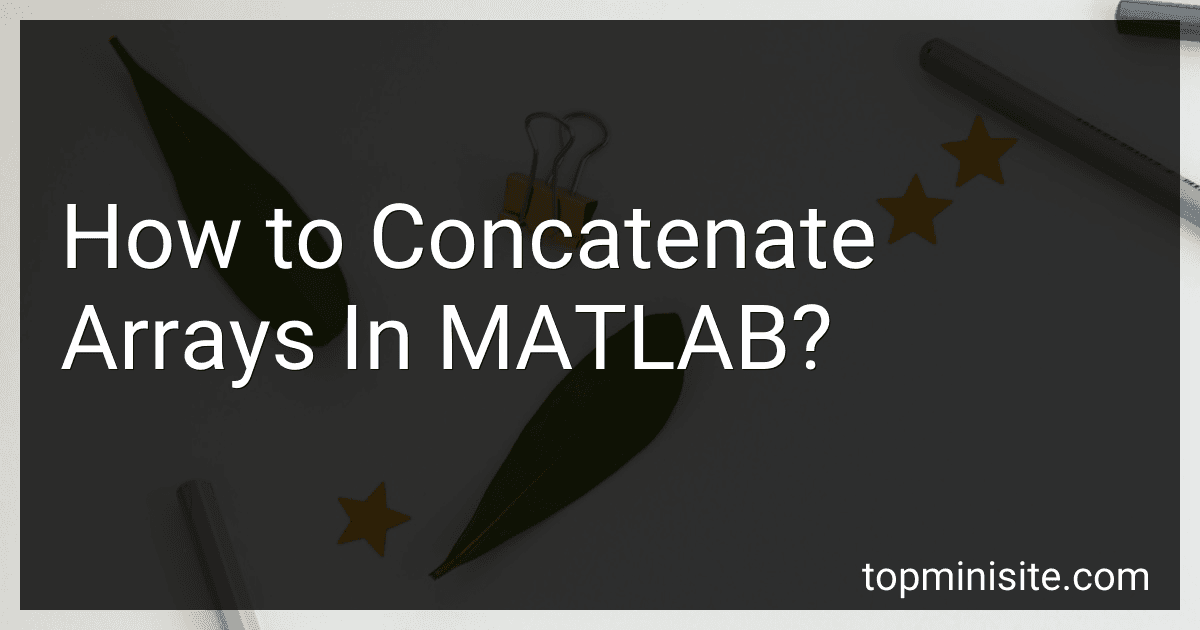Best MATLAB Guides to Buy in December 2025
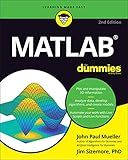
MATLAB For Dummies (For Dummies (Computer/Tech))


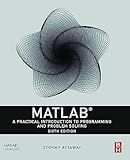
MATLAB: A Practical Introduction to Programming and Problem Solving


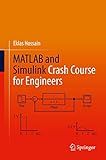
MATLAB and Simulink Crash Course for Engineers


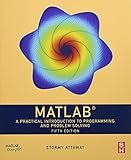
MATLAB: A Practical Introduction to Programming and Problem Solving



MATLAB for Machine Learning: Unlock the power of deep learning for swift and enhanced results



MATLAB: An Introduction with Applications



MATLAB for Brain and Cognitive Scientists (Mit Press)


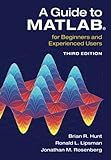
A Guide to MATLAB


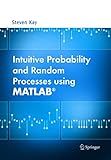
Intuitive Probability and Random Processes using MATLAB


To concatenate arrays in MATLAB, you can use the square brackets [] notation or the cat() function.
- Using square brackets [] notation: You can concatenate arrays horizontally (along the second dimension) by placing them next to each other within square brackets. For example, [A B] will concatenate arrays A and B. You can concatenate arrays vertically (along the first dimension) by placing them on top of each other within square brackets. For example, [A; B] will concatenate arrays A and B vertically.
- Using cat() function: The cat() function allows you to concatenate arrays along a specified dimension. It takes the syntax: C = cat(dim, A, B) where dim specifies the dimension along which to concatenate arrays A and B. For example, to concatenate arrays A and B vertically (along the first dimension), you can use C = cat(1, A, B). To concatenate arrays A and B horizontally (along the second dimension), you can use C = cat(2, A, B).
Note: The arrays being concatenated must have compatible sizes along the chosen dimension.
What is the syntax for concatenating arrays in MATLAB?
To concatenate arrays in MATLAB, you can use the square bracket operator ([]). The syntax is:
C = [A, B]
where A and B are the arrays you want to concatenate, and C is the resulting array.
How to concatenate an array with a scalar in MATLAB?
To concatenate an array with a scalar in MATLAB, you can use the square bracket notation. Here is an example:
- Create an array: A = [1 2 3];
- Define a scalar: scalar = 4;
- Concatenate the array and scalar using square brackets: result = [A scalar];
The resulting array result will be [1 2 3 4].
What is the effect of array concatenation on variable names in MATLAB?
In MATLAB, array concatenation allows you to combine multiple arrays into a single array by concatenating their elements.
When concatenating arrays, the resulting array will usually have a new name assigned to it unless you explicitly assign it to a previously defined variable. The original variables that were used for concatenation will still retain their original names and values.
Here's an example to illustrate this:
A = [1 2]; % A = [1 2] B = [3 4]; % B = [3 4] C = [A B]; % C = [1 2 3 4]
In this example, concatenating arrays A and B results in a new array C. However, variables A and B still exist with their original values and names.
What is the difference between concatenation and resizing an array in MATLAB?
Concatenation refers to the process of combining multiple arrays together to create a new array with all the elements from the original arrays. This can be done using various concatenation operators such as square brackets ([]), vertical concatenation (vertcat), and horizontal concatenation (horzcat).
Resizing an array, on the other hand, refers to changing the number of elements in an array without changing its fundamental structure. This can be done using functions like reshape, repmat, and the assignment operator (=).
In summary, concatenation combines multiple arrays into a single array, while resizing changes the number of elements in an array while keeping its structure intact.
What is the difference between concatenating arrays and using the colon operator in MATLAB?
In MATLAB, concatenating arrays and using the colon operator serve similar purposes, which is to create a new array by combining existing ones. However, they have some differences in terms of functionality and syntax.
- Functionality: Concatenating arrays: This operation allows you to join arrays of any sizes and dimensions by placing them next to each other. You can concatenate arrays vertically, horizontally, or in any other desired arrangement. Colon operator: The colon operator (:), also known as the range operator, is primarily used to create a sequence of values. It allows you to generate evenly spaced values between two endpoints, which can be used as indices to extract specific elements from an array.
- Syntax: Concatenating arrays: To concatenate arrays, you use square brackets [] and separate the arrays with commas. The syntax is as follows: newArray = [array1, array2, array3, ...]; Colon operator: The colon operator is used within the parentheses of an indexing operation. The syntax varies depending on the use case: To generate a sequence: sequence = startValue : increment : endValue; To extract a portion of an array: subArray = array(startIndex : endIndex);
In summary, concatenating arrays allows you to combine arrays spatially, while the colon operator creates a sequence of values or extracts a portion of an array based on indexing.
